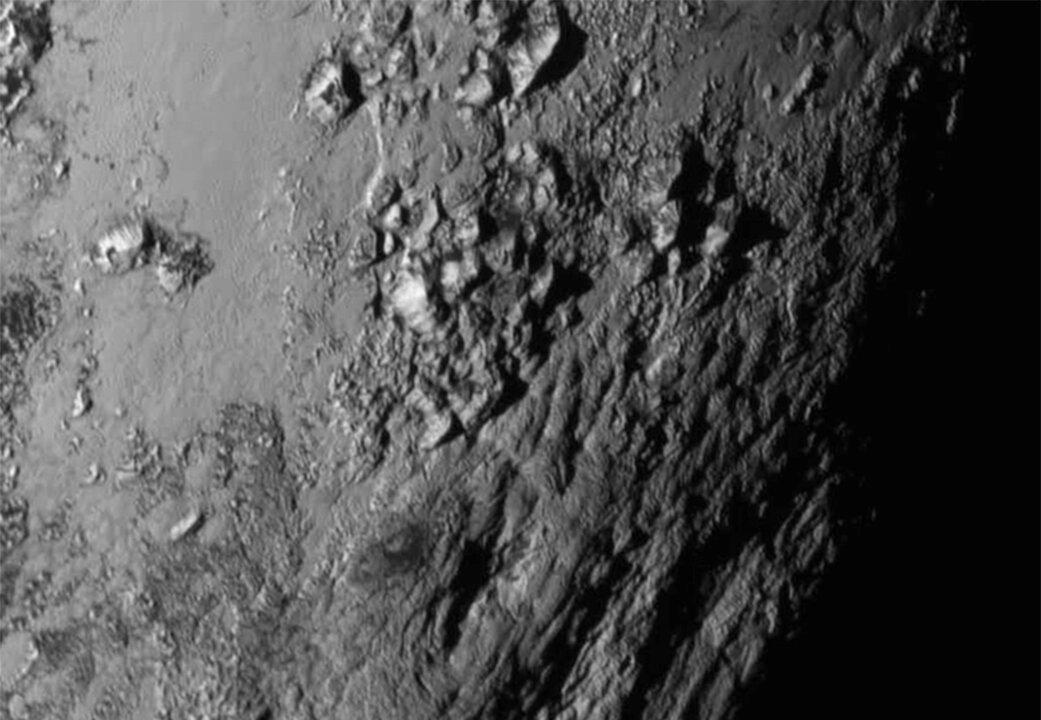CAPE CANAVERAL, Fla.—Mankind’s first close-up look at Pluto did not disappoint Wednesday: The pictures showed ice mountains on Pluto about as high as the Rockies and chasms on its big moon Charon that appear six times deeper than the Grand Canyon.
Especially astonishing to scientists was the total absence of impact craters in a zoom-in shot of one otherwise rugged slice of Pluto. That suggests that Pluto is not the dead ice ball many people think, but is instead geologically active even now, its surface sculpted not by collisions with cosmic debris but by its internal heat, the scientific team reported.





